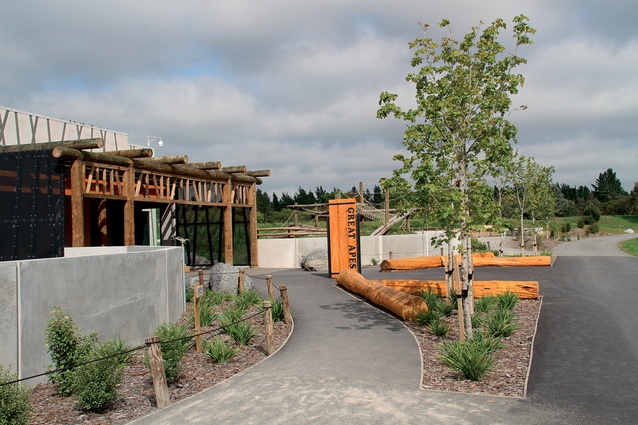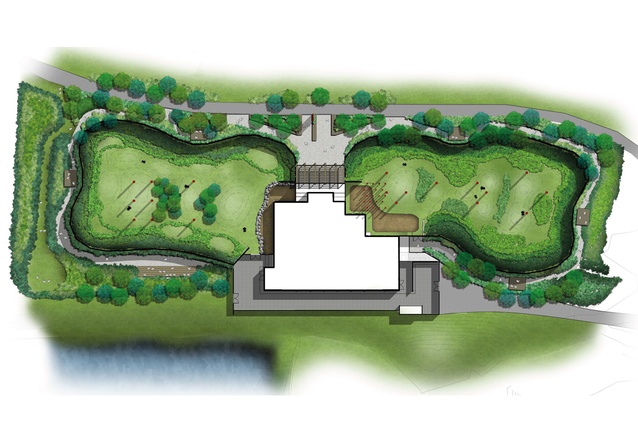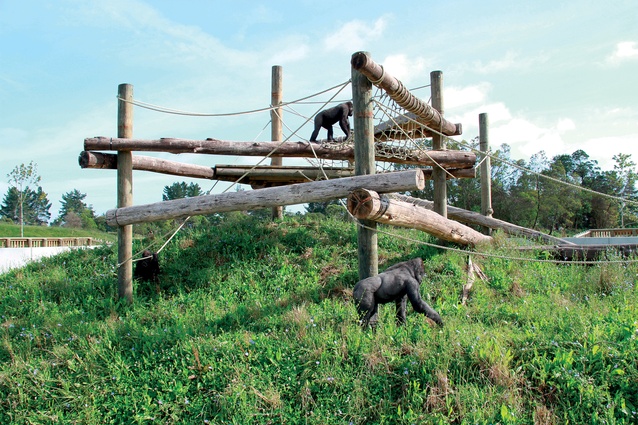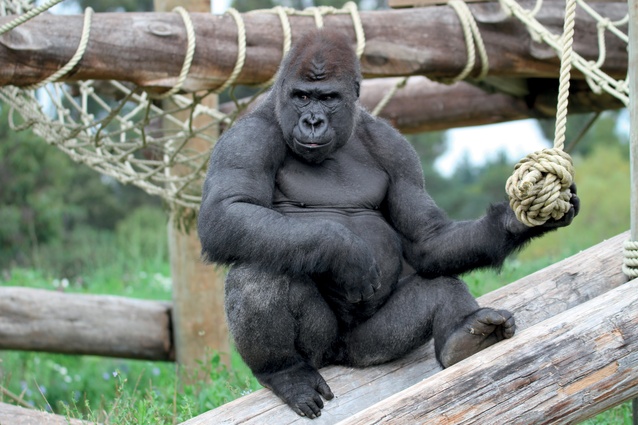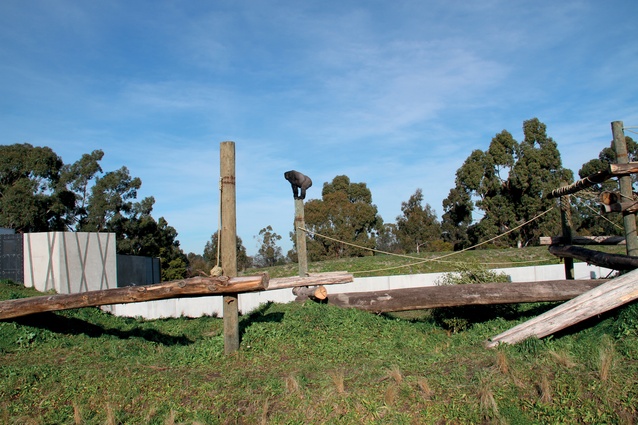Great Ape Centre
Orana Wildlife Park sits within the McLeans Forest section of the alps-to-ocean Waimakariri Regional Park, and for nearly 40 years has provided both observational and up-close-and-personal wildlife experiences for visitors, and contributed to managed breed-for-release recovery programmes for threatened native birds.
Opus Landscape Architects initially were engaged to assist Ian Cumberpatch Architects and the Orana Park staff with the master planning and design of the outdoor enclosures and external visitor areas of a stand-alone Gorilla Habitat. Proposals were completed just prior to the November 2010 earthquakes but the on-going delays resulted in a revision of the concept to a Great Ape Centre that now enables Orana to hold two species of critically endangered great apes in separate habitats within the one complex.
Wayne Rimmer of Opus says, “Designing the first-ever enclosure for gorillas in New Zealand required an immense amount of research and learning for everyone. For us, as landscape architects, it meant developing an understanding of gorilla and orang-utan behaviours. We also realised the important role of landscape in providing diversity, challenge and enrichment over a great ape’s lifetime; as well as the need to respond to specific requirements of the Orana management team and the viewing public.”

Given climate, soil, and maintenance considerations and Orana Park’s overall philosophy with respect to sustainability, it was decided early on in the design process that planting – both within the enclosures and surrounding the Centre – would reflect a predominantly local Canterbury Plains character, rather than try to either replicate the gorillas’ previous Australian environment or promote a Central African theme.
The size of the enclosure and issues over dietary complications, safety and visibility necessarily restricted the internal planting palette to a range of native grasses and sedges and a special endophyte-free turf species mix incorporating clovers, plantain and chicory designed to enrich the gorillas’ diet.
“A large range of plant and grass species proposed for the gorillas – such as flax, cordyline and rye grass – were eliminated from earlier proposals due to potential long-term impacts on their health and digestive systems,” Rimmer explains. “New and infill planting, and further trialling of different potentially enriching grasses and herbs will be an ongoing process.”
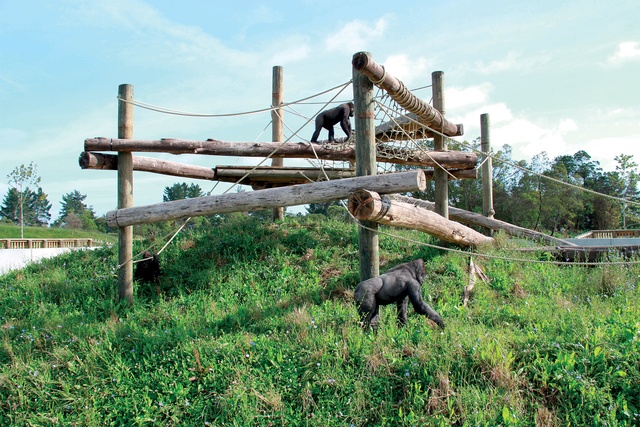
Mulch is an important component of the enclosure’s internal flooring and humidity system. Cost and a consistent, clean, low-dust, high-quality mix were important considerations along with ensuring the product would be palatable to the gorillas. Correspondence with overseas zoos and a number of local trials were needed before a suitable mix was finally settled on.
Dry moat enclosures, with perimeter wall heights of five meters ensure the outdoor areas are escape-proof. Raised viewing areas and circulation paths around the perimeter walls allow views into each enclosure, while mounding within each enclosure ensures the apes are not on view to the public at all times. This is particularly important in the case of gorillas, who prefer areas of privacy from each other and the public, and a perception of visual dominance over their surrounds.

Wherever possible, the enclosures for both the orang-utans and the gorillas have been future-proofed by embedding concrete foundations below the mounding to allow for changes to the layouts of the posts and climbing structures in the years to come.
Three Western lowland gorillas – bothers Fataki, Fuzu and Mahali – arrived from Taronga Zoo/Sydney in June 2015 and have well and truly settled in to their new indoor and outdoor enclosures. All three brothers were born in captivity in Australia. Fataki, the silverback, is 12 years old and 190kg. Fuzu and Mahali are both seven years old and weigh in at around 85kg. Together, they eat around 170kg of vegetables per week of which about 3% is fruit.
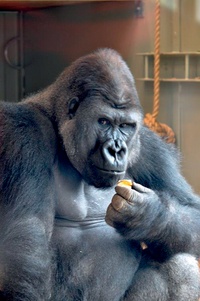
Western lowland gorillas, whose natural habitats are the montane forests and lowland swamps of Central Africa, are under threat of extinction in the wild from a range of factors including illegal hunting and poaching, farming and urbanization, mining for coltan (used in the production of mobile phones), low fertility, and vunerability to diseases such as ebola.
Orana’s initial role is supporting the international zoo-based breeding programme by housing these three male gorillas, conservation advocacy and raising awareness on the plight of gorillas in the wild. In the future Orana may receive a breeding recommendation.
The Great Ape Centre has had a significant impact on visitor numbers with record attendances on month-by-month comparisons. Future improvements are planned, with immediate work focussing on the continued preparation of the orang-utan enclosure, fine-tuning some elements of the gorilla habitat, completion of the external work around the Centre and the master planning for the entire park. Sumatran orang-utans will be transferred to Orana later this year to join the gorillas.
Rimmer says, “This project has been immensely rewarding on both personal and professional levels for everyone involved. Working as part of a consultant team alongside such talented, dedicated and enthusiastic people to produce a world-class centre for these critically endangered species has reinforced the value of landscape project work with strong long-term environmental, social and educational benefits.”

